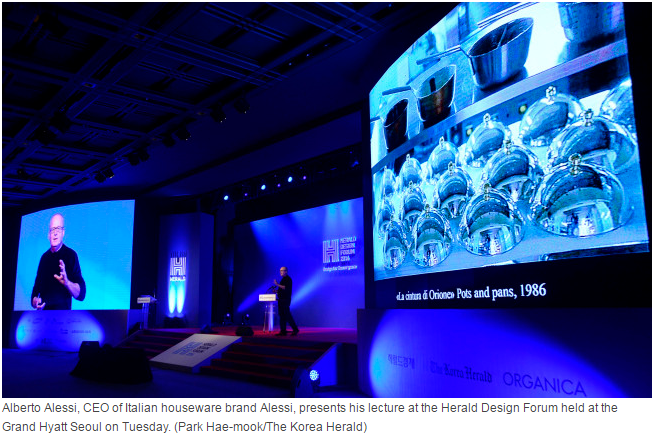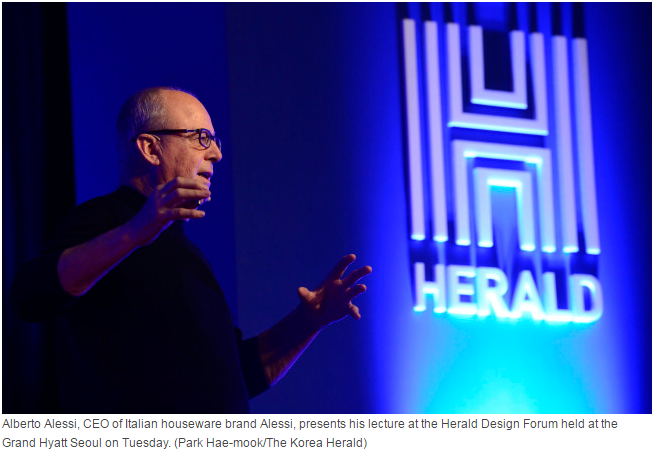[Herald Design Forum 2016] Core of design is intuition, sensibility: Alessi
Tracing the creative journey of his company, Alberto Alessi emphasized that design, above all, is a process that requires acute intuition and sensibility. He also lamented the current market conditions that make it harder for creators to experiment and take risks.
Alessi is the third-generation CEO of the eponymous Italian houseware brand that has come to be known for its elegant, whimsical designs that render everyday utensils into objets d’art. He was speaking to an audience of Korean designers, students and industry experts Tuesday at this year’s Herald Design Forum, held at the Grand Hyatt Seoul.

“Design is not just a tool for marketing, but a new form of art and poetry, very typical of our times,” he said. “Even in contemporary mass production, products are taken to another level when they are artistic.”
Unfortunately, said Alessi, intuition and sensibility are valued less and less in the marketplace due to risk-averse attitudes. Despite this, Alessi firmly believes that emphasis on design will continue to give companies -- both high-end and mass audience-oriented ones -- a competitive edge.
“Mass production companies try to work as far as possible from the borderline, so as not to fall into an area of (commercial) failure,” he said. “On the other hand, they’re all producing the same cars, same products.”
With the necessary courage, coupled with skills, Alessi believes it is possible to create products that are “above the line.”
“You’ll be able to conceive new ideas that can be very beneficial. This will give you a kind of monopoly (in the market).”
When the Alessi brand -- founded in 1921 -- gradually transitioned from artisanal craftsmanship to mass production in the 1950s, it did not sacrifice the artistic value of its products. Rather, it became more aggressive in its search for creativity, drawing in talent from various fields.
Since then, the company has collaborated with an eclectic mix of artists and brands -- ranging from the iconic surrealist painter Salvador Dali to global companies like Mitsubishi and Siemens -- long before “collaboration” became a trending notion in arts and culture.
During the 1970s, the company started working with important Italian design maestros that could realize Alessi’s vision.
Some of its signature products were achieved through collaborative processes, including the Juicy Salif citrus squeezer, designed by Philippe Starck; the Anna G. corkscrew, designed by Alessandro Mendini; and the whistling kettle, designed by Richard Sapper.

“We wanted to make a kettle that sings a melody when the water is boiling,” said Alessi, while blowing a note on a harmonica. “But it was difficult to achieve.”
Technical complications prevented Alessi from achieving this vision. The project was sidelined for about a year, until the company started experimenting with a different material.
Alessi does not shy away from creating products that are unabashedly “artistic.” For example, the “Alessi Alessophone” designed by renowned Italian architect Mendini in 1994 became the most expensive saxophone in the world.
Alessi said he regards his company as a kind of “research workshop.”
“Our role, and the role of design, is to practice an endless mediation between the most interesting expressions of today’s worldwide creativity, and people’s dreams,” he said.
By Rumy Doo (doo@heraldcorp.com)